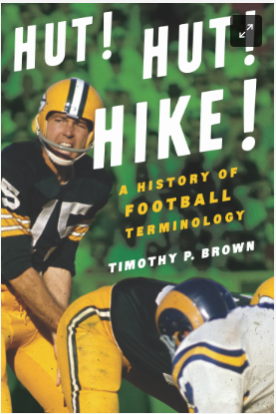Famous Baseball Players Who Wore Number 11
From the early days of the game to the modern era, number 11 has graced the backs of some of baseball's finest. We'll delve into the careers of sluggers who launched mammoth home runs, defensive stalwarts who controlled the game from behind the plate, and even the occasional pitching ace who defied expectations.
This series won't just be about statistics and accolades. We'll uncover the personalities that brought these jerseys to life. We'll explore their clutch moments, their signature plays, and the unique stories that shaped their careers.
Arizona Diamondbacks Team History
This series will be your all-access pass to the Diamondbacks' rollercoaster ride. We'll explore their early days, marked by thrilling victories and heartbreaking losses. We'll celebrate their historic championship run, led by iconic players like Randy Johnson and Luis Gonzalez. We'll delve into the highs and lows of the years that followed, including trades, managerial changes, and moments of brilliance on the field.
But this isn't just a narrative of wins and losses. We'll delve into the heart and soul of the team, highlighting the passionate fans who fill Chase Field with energy, the iconic figures who shaped the franchise, and the moments that cemented the Diamondbacks' place in baseball history.
Philadelphia Phillies Baseball Team History
Join us on a journey through time as we delve into the rich history of this iconic franchise. From their humble beginnings as the Philadelphia Ball Club in 1883 to their modern-day exploits, we'll explore the defining moments, legendary players, and passionate fans who have shaped the Phillies' story.
Baseball Jerseys and Uniforms
Al Gionfriddo biography and baseball career story
Winnipeg Jets Hockey Team History
A City's Dream Realized: Rebuilding a Legacy (2011-2018):
The arrival of the Jets brought back a flood of memories for Winnipeg, a city with a rich hockey history. The team inherited a young core of players from the Thrashers, including Dustin Byfuglien and Blake Wheeler. Early seasons were marked by rebuilding and establishing an identity. However, the passionate Winnipeg fanbase provided unwavering support, creating a vibrant home ice advantage.
Wheeler and Laine: A New Era of Offensive Firepower (2016-2019):
The drafting of Finnish phenom Patrik Laine in 2016 marked a turning point. Alongside established star Blake Wheeler, they formed a dynamic offensive duo. The Jets consistently ranked among the league leaders in goals scored, with their exciting brand of hockey drawing national attention. Playoff appearances became the norm, with the Jets reaching the Western Conference Finals in 2018.
Evolving Identity: From High-Powered Offense to Balanced Threat (2019-Present):
The departure of Laine in 2019 led to a strategic shift. The Jets focused on building a more balanced team, bolstering their defense and goaltending. The arrival of Connor Hellebuyck as the undisputed starting goaltender provided a crucial piece. While the high-octane offense remained a strength, the Jets developed a more defensively responsible style. This new approach has resulted in continued playoff appearances, with the team consistently challenging for the Stanley Cup.
A Bright Future in Manitoba (Present):
The modern Winnipeg Jets are a force to be reckoned with in the NHL. With a talented core of young players like Kyle Connor, Mark Scheifele, and Nikolaj Ehlers, and a strong supporting cast, the Jets are poised for continued success. Backed by a passionate fanbase and a dedicated ownership group, the future of Winnipeg Jets hockey is bright, ensuring that the "True North" remains a force in the NHL for years to come.
The Hockey Hall of Fame Honoring Legends and Celebrating History
Celebrating Greatness: At its core, the HHOF recognizes and immortalizes the achievements of exceptional individuals who have made significant contributions to the sport. The prestigious title of "Honoured Member" is bestowed upon players, builders, and referees based on strict selection criteria, considering their on-ice performance, career impact, and overall contributions to the game.
Beyond Statistics: While statistics play a role, the HHOF transcends mere numbers. It recognizes leadership, sportsmanship, and the ability to inspire future generations. The inductees embody the spirit of the game, representing its values of commitment, teamwork, and excellence.
More Than Just a Museum: The HHOF offers a captivating experience for fans and players alike. Stepping through its doors is like taking a journey through hockey history. Interactive exhibits, displays of iconic artifacts, and multimedia presentations bring the legends and stories to life. Educational programs and special events further enrich the experience, promoting the love of the game and fostering understanding of its impact on society.
Legacy and Future: The HHOF serves as a repository of hockey's rich history, ensuring that the achievements of its greats are remembered and celebrated for generations to come. Beyond honoring the past, it plays a vital role in shaping the future of the game by inspiring young players and fostering a deeper appreciation for hockey's cultural significance.
Chicago Blackhawks Hockey Team History
Early Days and Initial Success (1926-1944):
-In 1926, Chicago entered the newly formed National Hockey League (NHL) with the arrival of the Black Hawks (later changed to Blackhawks). The team was named after a Black Hawk Native American military unit, reflecting the owner's fascination with American history.
-The early years were marked by inconsistency. However, the Blackhawks found success in the 1930s under the leadership of owner Frederic McLaughlin, who emphasized building an "all-American" team.
-Back-to-back Stanley Cup victories in 1934 and 1938 solidified Chicago as a major force in the NHL. Legends like Charlie Gardiner in goal and Johnny Gottselig on offense led the charge.
Lean Years and Rebuilding (1944-1960s):
-Following the initial success, the Blackhawks faced a period of decline. Frequent coaching changes and a lack of top-tier talent resulted in playoff droughts.
-The arrival of General Manager Tommy Ivan in the 1950s marked a turning point. He implemented a strong farm system that would produce future stars in the coming years.
The Golden Age: Hull, Mikita, and the Rise of a Dynasty (1960s-1970s):
-The 1960s ushered in a golden age for the Blackhawks. The arrival of Bobby Hull, a prolific goal scorer with his iconic slap shot, and Stan Mikita, a gifted playmaker, transformed the team's offensive capabilities.
-Under coach Roger Neilson, the Blackhawks adopted an aggressive, fast-paced style. They reached the Stanley Cup Finals in 1961 and 1962, eventually winning the coveted trophy in 1961, defeating the Detroit Red Wings.
-Goalie Glenn Hall provided a strong defensive presence, forming a formidable partnership with Hull and Mikita. This core group continued to dominate the league throughout the decade, capturing another Stanley Cup in 1967 against the Montreal Canadiens.
A Period of Transition and Rebuilding (1970s-1990s):
-The departure of key players like Hull and Mikita marked a period of transition for the Blackhawks. Despite flashes of brilliance, including a trip to the Stanley Cup Finals in 1973, the team struggled to maintain consistent success.
-The 1980s and 1990s were marked by inconsistency. The Blackhawks drafted some notable talents like Denis Savard and Steve Larmer, but overall team success remained elusive.
The Deadliest Decade: Dynasty Reborn (2000s-2010s):
-The arrival of the new millennium brought a resurgence for the Blackhawks. Drafting franchise cornerstones like Jonathan Toews and Patrick Kane in the early 2000s laid the foundation for another dynasty.
-The combination of skilled young players like Kane and Toews with veterans like Marian Hossa and Duncan Keith under coach Joel Quenneville created a juggernaut.
The Blackhawks won three Stanley Cup championships in a six-year span (2010, 2013, 2015), establishing themselves as one of the most dominant teams of the modern era. Their fast-paced, offensively charged style captivated fans worldwide.
National Hockey League
The National Hockey League (NHL), with its fast-paced action and iconic rivalries, boasts a rich history that spans over a century. Here's a glimpse into its evolution:
Humble Beginnings (1909-1917):
-The NHL originated in 1909 with the formation of the National Hockey Association (NHA) in Eastern Canada.
-Four teams – the Montreal Canadiens, Ottawa Senators, Toronto St. Patricks (later Maple Leafs), and Montreal Wanderers – formed the core of the league in its early years.
-This era saw the establishment of some of the game's most enduring traditions, including the awarding of the Stanley Cup, hockey's ultimate prize.
Expansion and Consolidation (1917-1942):
-In 1917, a dispute within the NHA led to the formation of the NHL, initially featuring four teams.
-The league witnessed its first American franchise in 1924 with the addition of the Boston Bruins. Expansion continued throughout the 1920s, reaching major cities like Chicago, Detroit, and New York.
-The early decades were marked by the dominance of the "Original Six" teams – Canadiens, Maple Leafs, Bruins, Red Wings, Blackhawks, and Rangers. These teams established fierce rivalries that continue to captivate fans today.
The Rocket Richard Era and Post-War Growth (1942-1967):
-The arrival of legendary player Maurice "Rocket" Richard in 1942 ushered in a new era for the NHL. His electrifying play and scoring prowess captivated fans and helped popularize the sport.
-The post-war years witnessed significant growth for the NHL. The league expanded westward, reaching cities like Detroit and Chicago, and southward, adding teams in Atlanta and St. Louis.
-Television's growing influence further fueled the NHL's popularity, bringing the sport into living rooms across North America.
The Expansion Era and Rise of "The Great One" (1967-1990):
-1967 marked a turning point with the NHL's first major expansion, adding six new teams, primarily in the United States.
-This era witnessed the emergence of legendary players like Bobby Orr, whose innovative style revolutionized the game's defensive approach.
-The arrival of Wayne Gretzky in 1979 redefined offensive dominance. "The Great One" shattered numerous records and captivated fans with his unmatched skill.
The Modern Era: Globalization and Continued Growth (1990-Present):
-The past few decades have seen the NHL embrace globalization. Teams have been added in Canada, the United States, and even Europe, showcasing the sport's international appeal.
-The salary cap system, implemented in 2005, aimed to create more competitive balance across the league.
-Technological advancements like instant replay and high-definition broadcasts have further enhanced the fan experience.
A Legacy of Excitement and Enduring Tradition:
The NHL's journey is filled with iconic moments, legendary players, and fierce rivalries. It has evolved from a regional sport to a global phenomenon, captivating fans worldwide. As the NHL continues to navigate the ever-changing sporting landscape, one thing remains constant: the passion and dedication of its players, teams, and fans who ensure that the tradition of fast-paced hockey continues to thrive.
Boston Bruins Hockey Team History
Early Days and Becoming Part of the "Original Six" (1924-1940s):
-Founded in 1924, the Bruins were the first American team to join the NHL, becoming part of the prestigious "Original Six" group alongside the Montreal Canadiens, Toronto Maple Leafs, Detroit Red Wings, Chicago Blackhawks, and New York Rangers.
-The early years saw the Bruins establish themselves as a competitive force. Players like Hall of Famers Eddie Shore, Dit Clapper, and Tiny Thompson led the team to their first Stanley Cup victory in 1929.
-The 1930s and 1940s were marked by consistency and another Stanley Cup win in 1939. This period also saw the emergence of stars like Bill Cowley and Roy Conacher.
The Bobby Orr Era and the "Golden Age" of Bruins Hockey (1960s-1970s):
-The 1960s were a challenging time, with the Bruins finishing last in the league for six out of seven seasons. However, the tide began to turn with the arrival of young phenom Bobby Orr in 1966.
-Orr's dynamic offensive and defensive skills, coupled with his iconic slapshot, revolutionized the game. Alongside Phil Esposito, a prolific goal-scorer, they formed a potent duo that led the Bruins back to prominence.
-The "Golden Age" of Bruins hockey arrived in the 1970s.
-The team, fueled by Orr and Esposito, captured two Stanley Cups in 1970 and 1972, etching their names in Bruins lore.
Post-Orr Era and Rebuilding Years (1970s-2000s):
-Bobby Orr's departure due to injuries left a significant void. The Bruins underwent a period of rebuilding throughout the late 1970s and 1980s. However, they remained competitive, reaching the playoffs on several occasions.
-Ray Bourque, a future Hall of Famer, emerged as the team's star during this era, showcasing exceptional offensive talent and leadership. Despite his individual brilliance, the Bruins fell short of another Stanley Cup title.
The Rise of a New Dynasty and Continued Success (2000s-Present):
-The arrival of new ownership and a focus on player development ushered in a new era of success. The Bruins drafted future stars like Patrice Bergeron and Zdeno Chara, who became the core of a dominant team.
The acquisition of the dynamic scoring duo of Brad
-Marchand and David Pastrnak further bolstered the offense. This combination, coupled with a strong defense led by Chara, propelled the Bruins back to the Stanley Cup Finals.
-In 2011, the Bruins captured their sixth Stanley Cup title, defeating the Vancouver Canucks. They continued to be a force in the Eastern Conference, reaching the finals again in 2013.



.jpg?https://jerseydispatch.com/pfeL/p/c312642c0431e75b485e432232c99c1c/website/Daily-Sports-Uniform-Number-History/February/February-8-Jersey-Numbers/Images/.Basketball_at_Pas-en-Artois,_France,_1918_(20166469838).jpg)
.jpg?https://jerseydispatch.com/pfeL/p/c312642c0431e75b485e432232c99c1c/website/Sports-History-Photo-of-the-Day/February-Images/February-8-Image/images/.640px-Arctic_Sisterhood_Basketball_banner,_Nome_(NOWELL_200).jpg)





